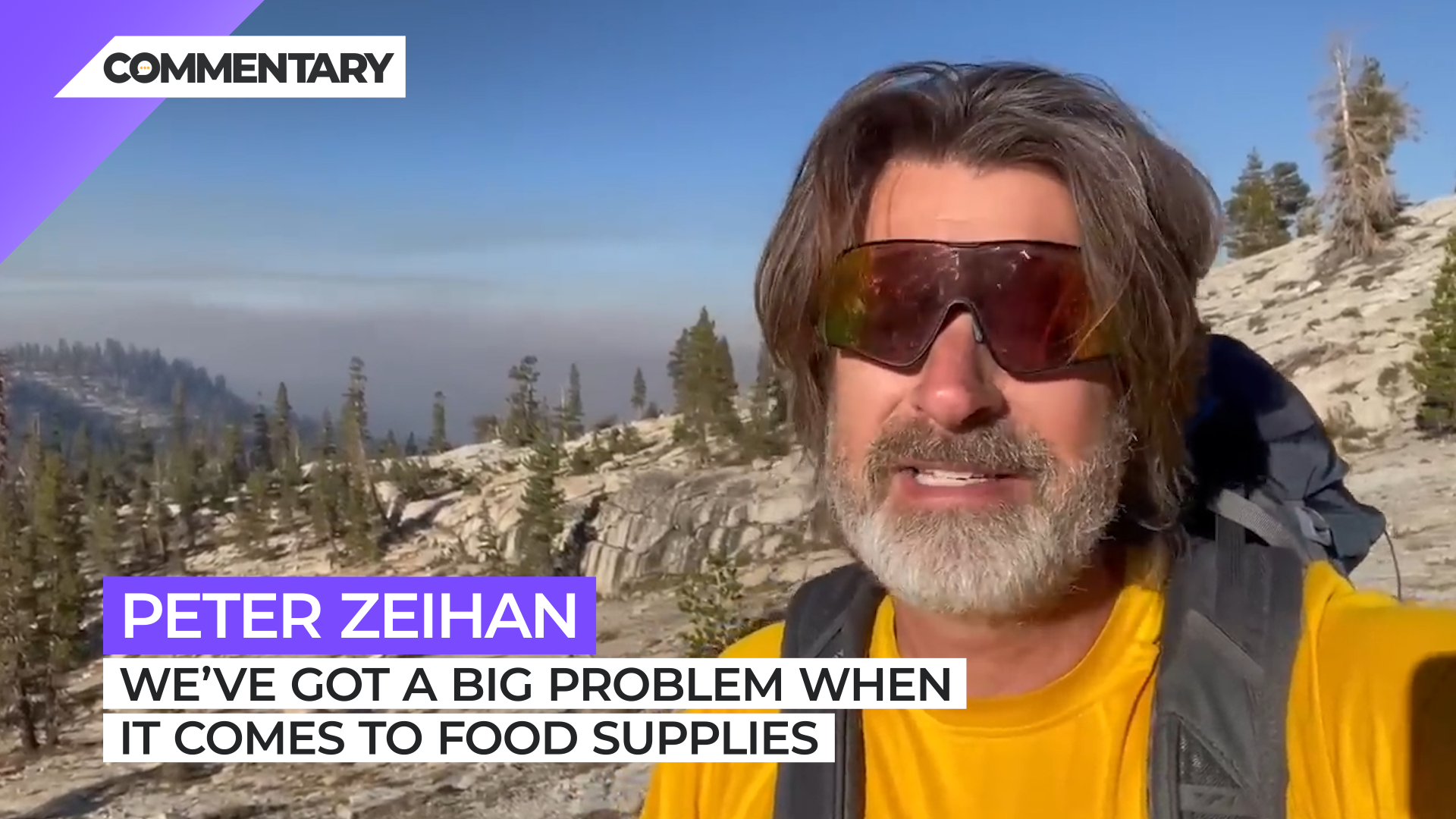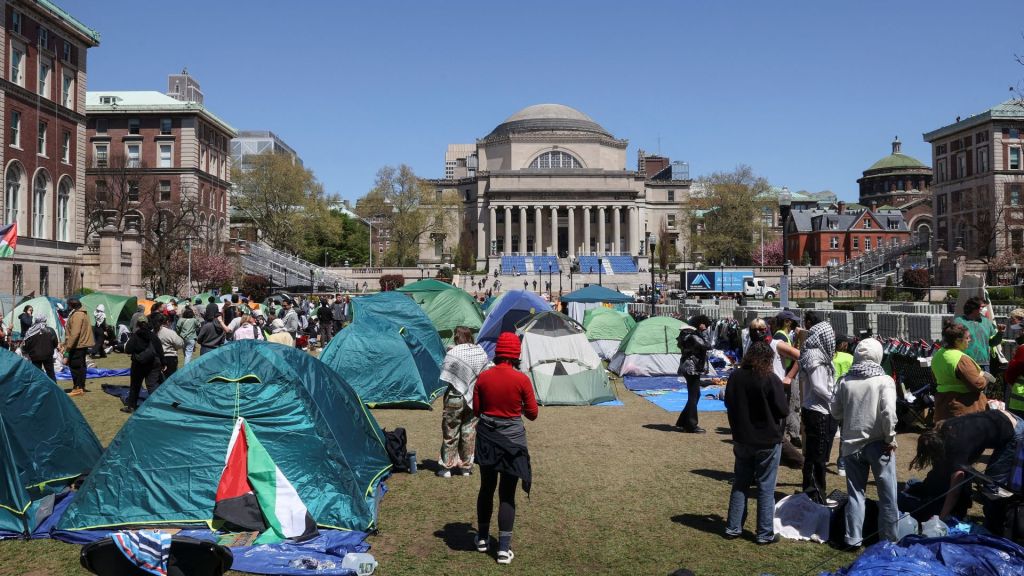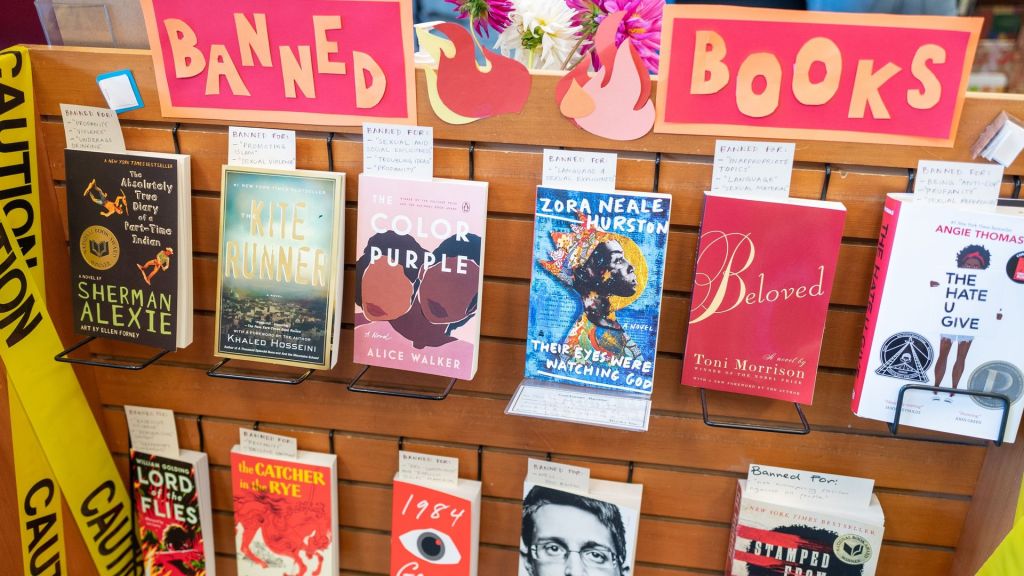
Commentary
-
Our commentary partners will help you reach your own conclusions on complex topics.
Hi, everyone, Peter Zeihan here coming to you from about halfway up Tenaya Peak just above Mildred Lake. Behind me, you can see the smoke from the red fire, which started since I got here. And which is putting an unceremonious end to part of my backpacking trip, because I woke up with ash on my tent this morning. And that is no bueno.
It’s also a lovely opportunity to talk about some of the tactical aspects of climate change. Now, we’ve all heard the stories that the earth is going to warm by two or three or four or five or six degrees, or whatever it happens to be. Everyone has their own estimate and they’re all based on a series of educated guesses and simulations, because humanity hasn’t been around long enough with good data collection in order to make predictions down to this zip code level.
So everyone kind of goes through the broad spectrum guesses. Makes it very hard to do any sort of meaningful policy, especially when it comes to things like mitigation, or planning for things like crops. But what we’re seeing right here is an example of two things.
First of all, remember I talked about winds and how two sources of wind are better when it comes to…precipitation. California doesn’t have that. Neither does Portland, neither does Seattle, they get Pacific currents and that is it. They get nothing from the Gulf of Mexico. And because of that their weather is going to be significantly more erratic than what we have seen in the Midwest, for example. If you guys remember a couple of years ago, Portland was in the 120s or 110s…it was Canada that got 120. Anyway, it was a crazy summer. And for almost three weeks, Portland was hotter than Las Vegas had ever been. We haven’t seen that yet in California. Hopefully we never will.
But this was a fire caused by a single lightning strike that has since gotten a little bit out of control. You can see what the impact is. Second, what was the second point? Oh, yeah, fringe. The more stable the climate zone, the closer it is to the temperate zone with humidity, the greater the temperature shock is required to knock it out of alignment. But the further you are from that temperate humid zone, the more likely you are to… experience extreme fluctuations. So here in the Sierra Nevadas, it’s an arid zone at high altitude, so [it’s] always has low humidity. It’s one of the reasons I like backpacking here. But it also makes it one of the more vulnerable places in North America.
And if you look across the world, most of the population lives in zones that are relatively humid, which is great. Think India or southern China. But most of them get their food from places that are not. Think the Russian wheat belt, think western Australia, think southern Brazil.
So we’re in this weird problem, where people might not feel climate change as much as their food production. And that generates a whole other series of issues.
So I’m not as concerned about climate refugees, as most people. It’s not that I don’t think it’s going to be a thing.
I just think we’ve got a bigger problem when it comes to food supplies. All right, that’s it from me. I’m going to be going up and over this mountain and then down to Cathedral Lakes. I might record another one there. See you guys soon. Bye.
-
Global internet in a precarious state, but that could be a positive
Over 500 underwater cables span over 870,000 miles worldwide, serving as the foundation of the modern global internet. Despite their critical role in facilitating communication, these cables often go unnoticed, even as the amount of data transmitted through them has surged. So what happens if the cables fail? Straight Arrow News contributor Peter Zeihan contends…
-
Water wars are an unlikely future
Foreign policy writers have long warned of the possibility that clean drinking water might become “the next oil” — that is, that major wars might be fought around the globe over access to potable water. With expanding populations and finite water supplies, these critics argue that humans will inevitably fight each other to secure drinking…
-
Are Russia’s hypersonic missiles too good to be true?
Russia has reportedly used five of its new hypersonic Zircon missiles to target Kyiv since the beginning of 2024. Russia claims that these sea-based missiles, boasting a range of 625 miles and capable of traveling at nine times the speed of sound, are part of its family of “superweapons” aimed at penetrating the U.S. missile…
-
Norway sending F-16s to Ukraine
In recent months, the need for Ukrainian air defenses has grown more urgent. As U.S. aid is unable to pass through Congress, Ukraine’s European allies have been stepping up to provide what they can. Norway is now the latest nation to pledge F-16s to Ukraine, not only to defend Ukrainian airspace, but also for the…
-
Russians targeting civilian emergency crews in Ukraine
Russian forces are applying a brutal tactic in their war on Ukraine. The tactic, “double tap,” includes an initial strike on a specific civilian target of some value, followed by a second strike intentionally designed to kill the emergency first responders, medical staff, firefighters, and other key personnel dispatched to the location of the first…
Latest Stories
-
 Reuters
Reuters
Voyager 1 sending data to Earth for first time in five months
-
 Getty Images
Getty Images
White House imposes staffing requirements for nursing homes
-
 Getty Images
Getty Images
Protests lead to arrests across college campuses
-
 Getty Images
Getty Images
Conservative media isn’t covering Kari Lake Supreme Court dismissal
-
 Getty Images
Getty Images
Supreme Court says it will hear case on Biden’s ‘ghost gun’ ban
Popular Opinions
-
In addition to the facts, we believe it’s vital to hear perspectives from all sides of the political spectrum.
Latest Opinions
In addition to the facts, we believe it’s vital to hear perspectives from all sides of the political spectrum. We hope these different voices will help you reach your own conclusions.
The opinions published in this section are solely those of the contributors and do not reflect the views of Straight Arrow News.

















Latest Commentary
We know it is important to hear from a diverse range of observers on the complex topics we face and believe our commentary partners will help you reach your own conclusions.
The commentaries published in this section are solely those of the contributors and do not reflect the views of Straight Arrow News.
Peter Zeihan
Geopolitical StrategistWater wars are an unlikely future
Are Russia’s hypersonic missiles too good to be true?
Norway sending F-16s to Ukraine
Dr. Frank Luntz
Pollster and Political Analyst‘Take the job seriously’: Why Americans are fed up with Congress
‘If we can shrink it, it will stop growing’: Americans talk debt, deficit
‘I don’t think they care’: Undecided voters explain their reasons
Pete Ricketts
U.S. Senator for Nebraska